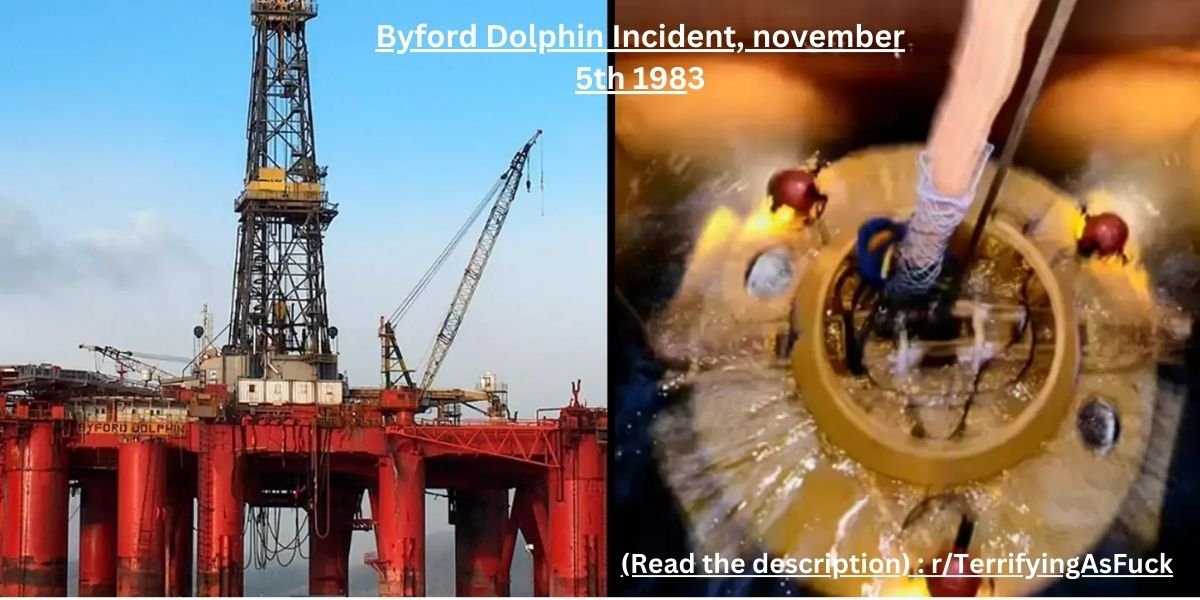The Byford Dolphin incident is a harrowing event that serves as a grim reminder of the dangers associated with deep-sea drilling. This tragic accident, which occurred on November 5, 1983, resulted in the deaths of five men and left a lasting impact on the offshore drilling industry. In this comprehensive article, we will delve into the details of the incident, the causes and consequences, and the lessons learned from this devastating event. We’ll also explore related topics such as the Byford Dolphin incident pictures, the condition of the bodies, photos from the incident, and the autopsy details.
Background: The Byford Dolphin and Offshore Drilling
The Byford Dolphin is a semi-submersible, column-stabilized drilling rig that was operated by Dolphin Drilling, a subsidiary of Fred. Olsen Energy. It was primarily used for oil and gas exploration in the North Sea, one of the most challenging and hazardous environments for offshore drilling. The rig was equipped with a diving bell, a crucial piece of equipment for deep-sea operations, allowing divers to work at great depths.
The Incident: A Timeline of Tragedy
November 5, 1983
On that fateful day, the Byford Dolphin was conducting routine maintenance operations, which involved the use of the diving bell. The bell, containing two divers, was connected to a diving chamber on the rig via a trunk, a pressurized tunnel that maintains the necessary conditions for divers working at great depths.
The incident occurred during the process of transferring the divers from the diving bell to the chamber. Due to a catastrophic human error, the trunk connecting the diving bell and the chamber was prematurely opened. This sudden decompression, known as an explosive decompression, resulted in a near-instantaneous change in pressure, causing catastrophic injuries to the divers inside the bell and the chamber.
The Immediate Aftermath
The effects of the explosive decompression were immediate and horrifying. Four divers and one dive tender were killed instantly, while another dive tender was severely injured. The pressure change caused the air inside the divers’ bodies to expand violently, leading to fatal injuries.
Byford Dolphin Incident Pictures and Photos
Photographs from the incident, including Byford Dolphin incident pictures and Byford Dolphin incident photos, show the aftermath of the tragedy. These images, though graphic and distressing, provide a stark visual account of the destruction caused by the decompression. They have been used extensively in investigations and safety training to highlight the severity of the risks involved in deep-sea diving operations.
The Investigation: Uncovering the Causes
Following the incident, a thorough investigation was launched to determine the exact causes and identify potential safety failures. The primary findings of the investigation highlighted several critical issues:
- Human Error: The immediate cause of the incident was the premature opening of the trunk door, a critical mistake that led to the explosive decompression. The investigation found that the dive tender responsible for operating the door controls may not have been fully aware of the dangers associated with premature opening.
- Equipment Design: The design of the diving bell and chamber system was found to have significant flaws. The investigation revealed that there were inadequate safety mechanisms to prevent the trunk door from being opened while the system was still pressurized.
- Procedural Failures: There were lapses in safety procedures and protocols. The investigation highlighted a lack of adequate training for personnel and insufficient adherence to safety guidelines.
The Condition of the Bodies and Autopsy Details
The condition of the bodies recovered from the incident was a testament to the sheer violence of the decompression. The divers suffered severe injuries, including massive internal trauma and dismemberment. The autopsy reports provided a detailed account of the injuries, which included:
- Severe lung damage caused by the rapid expansion of air.
- Ruptured blood vessels and internal organs.
- Disintegration and dismemberment due to the explosive force.
These findings were crucial in understanding the physical effects of such decompression incidents and underscored the need for stringent safety measures.
Byford Dolphin Incident Autopsy
The Byford Dolphin incident autopsy reports were instrumental in highlighting the immediate and fatal consequences of explosive decompression. These reports, while graphic, have served as critical educational tools in diving safety training programs worldwide. They provide detailed medical insights into the injuries sustained and emphasize the importance of adhering to safety protocols.
The Impact on Safety Regulations
The Byford Dolphin incident had a profound impact on safety regulations within the offshore drilling and diving industries. Key changes and improvements were implemented in response to the findings of the investigation:
- Enhanced Safety Protocols: New and more stringent safety protocols were introduced to prevent similar incidents. These protocols included mandatory safety checks, improved training programs, and stricter adherence to operational procedures.
- Design Improvements: The design of diving bells and chambers was overhauled to include fail-safe mechanisms that prevent premature opening. These improvements aimed to ensure that such systems could not be depressurized accidentally.
- Increased Training: Emphasis was placed on comprehensive training for all personnel involved in diving operations. This training covered the potential risks, proper handling of equipment, and emergency response procedures.
- Regulatory Oversight: Regulatory bodies implemented stricter oversight and regular inspections of offshore drilling rigs to ensure compliance with safety standards. This included periodic audits of equipment and procedures.
The Legacy of the Byford Dolphin Incident
The Byford Dolphin incident remains one of the most significant and tragic events in the history of offshore drilling. It serves as a somber reminder of the inherent dangers of deep-sea operations and the critical importance of safety measures. The incident led to a paradigm shift in how safety is perceived and implemented in the industry.
Memorials and Commemorations
The victims of the Byford Dolphin incident are remembered through various memorials and commemorations. These efforts aim to honor their memory and ensure that their sacrifice is not forgotten. Memorial plaques and services are held to pay tribute to the lives lost and to reaffirm the commitment to safety in the industry.
Continuing Education and Awareness
The lessons learned from the Byford Dolphin incident continue to be a focal point in safety training and education. Case studies based on the incident are used to educate new generations of divers and offshore personnel. By studying the causes and consequences of the incident, industry professionals can better understand the importance of adhering to safety protocols and the potential repercussions of negligence.
Conclusion
The Byford Dolphin incident is a tragic chapter in the history of offshore drilling, marked by the loss of five lives and the lasting impact on safety regulations. The detailed investigation and subsequent changes in industry practices underscore the importance of learning from past mistakes to prevent future tragedies. The graphic images, autopsy reports, and personal accounts from the incident serve as powerful reminders of the risks associated with deep-sea operations and the need for unwavering commitment to safety.
By reflecting on the Byford Dolphin incident, we not only honor the memory of those who lost their lives but also reinforce our resolve to ensure that such a tragedy never happens again. The legacy of the Byford Dolphin incident is one of learning, improvement, and a steadfast commitment to protecting the lives of those who work in one of the most challenging environments on Earth.
You can read also:- President of the United States Republican Party Primary – California, 2024
Best Time To Visit Bali: Bali Tour Package



